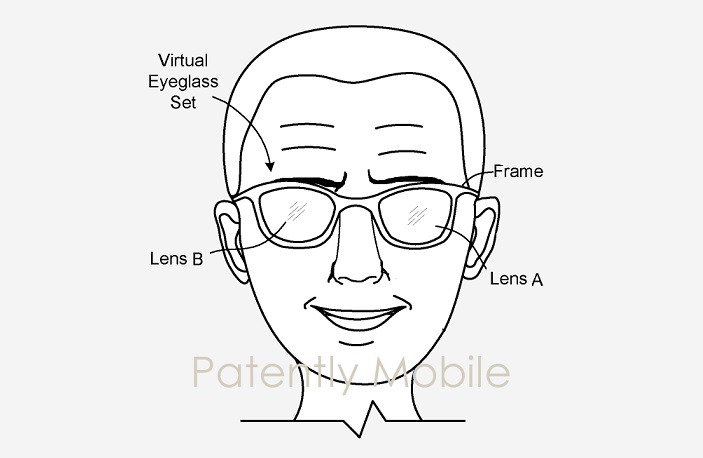Both Google and Facebook are in a race to beat Apple to market with AR smartglasses. Google, who was first with this concept, got quickly derailed by having their “Glass” product stand out with its pirate look. The public went from loving it to viewing the device as a way to spy on everyday people. The “creep” factor stuck and early adopters were even getting punched in the face for being bold enough to wear ‘Glass’ in public.
As we’ve reported on before, Google is back with a more traditional design for future smartglasses. Their granted patent states that “a virtual eyeglass set is configured to display, at each of a right lens and a left lens, a light field image based on data received via a light field camera on an opposite side of the lens, the light field image presenting an image of objects beyond the virtual eyeglass set from a perspective of an eye of a user wearing the virtual eyeglass set.”
To correct for the distance that the user’s eyes are behind the lenses, which creates different points of origin for the user’s eyes than the cameras on the lenses, the cameras may include light field cameras with multiple viewpoints, and the virtual eyeglass set may include a processor that constructs an image from the vantage points of the eyes for display to the user, thereby eliminating a parallax effect.
A light field camera, which may also be considered a plenoptic camera, may capture images from multiple positions and/or viewpoints, using multiple cameras or sub-cameras and/or multiple lenses. Google acquired Lytro in March 2018 who was considered to be one of the leaders in light-field cameras or plenoptic cameras. This could be an advantage with Google’s next-gen glasses.
Capturing the images from multiple positions and/or viewpoints may allow images of three-dimensional scenes to be constructed from vantage points and/or positions from which images were not actually captured.
To create an image of a three-dimensional scene, rather than a flat screen, the displays may include light field displays with multiple displays. The light field displays may present three-dimensional images to each of the user’s eyes with depth cues so that looking into the light field display makes the user feel as if he or she is looking into an actual scene.
Google’s patent FIG. 1A below is a diagram of a user wearing a virtual eyeglass set; FIG. 1B is an exploded view of the virtual eyeglass set and the user’s eyes; FIG. 5 shows the user’s eyes and the lenses in an example in which each of the lenses includes a wide-angle camera.
Content retrieved from: https://www.patentlyapple.com/patently-apple/2020/09/google-wins-a-patent-for-future-smartglasses-in-the-hopes-of-beating-apple-to-market.html.

